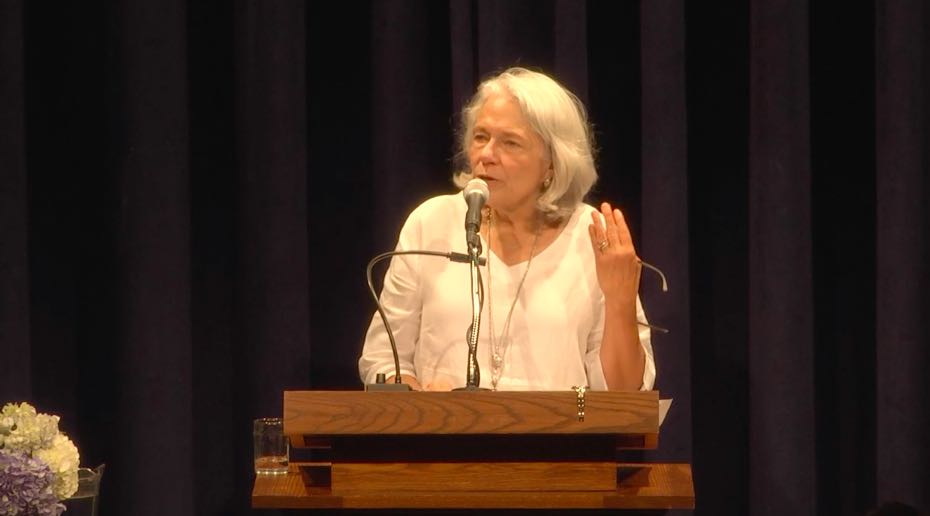Nancie Atwell Gives the 2017 Drew Lecture
1January 16, 2018 by Tom McKenna

Nancie Atwell, Honorary Doctor of Letters, BLSE 2016, and one of the most respected and influential educators in the world, gave the 2017 Elizabeth Drew Memorial Lecture on the Bread Loaf Vermont campus this summer. Atwell, who attended Bread Loaf from 1979–80 and in 1982, has been recognized as Poetry Teacher of the Year by the Library of Congress and as the first recipient of the Global Teacher Prize from the Varkey Foundation. Atwell’s classic book In the Middle has been called “the greatest book on literacy teaching ever written in this country.” She is also the author of The Reading Zone, Systems to Transform Your Classroom and School, Naming the World, and Lessons That Change Writers. She teaches seventh and eighth grade writing, reading, and history at the Center for Teaching and Learning, a K–8 school she founded in Edgecomb, Maine, which advances excellence in teaching, teacher research, and writing, and to which she donated the entire $1 million Varkey Foundation award. The Drew Lecture, given July 5, inspired many BLTN teachers to focus on deepening their students’ “self-selected independent book reading” opportunities in this academic year.
In her talk, presented in full below, Atwell makes the case for a curriculum that includes “frequent, voluminous, happy experiences with books” in a time when commercial products and traditional curricula are squeezing self-selected reading out of the school day. “All students,” she contends, “benefit when teachers take care of them as readers.” Atwell uses the story of “Mike,” an inexperienced middle school reader who experiences a profound transformation from a non-reader to a voracious and skilled reader over the course of a year in a supportive and challenging intellectual environment featuring “self-selected, independent book reading.”
“More than anybody else we teach, it’s the inexperienced, unenthusiastic readers like Mike who need and deserve choice, time, compelling stories with characters they can identify with, vicarious experiences, and pleasure. They don’t need strategy instruction. They don’t need anything to do with Post-it notes. They don’t need close reading sessions, reading logs, book reports, quizzes, whole class novels, vocabulary lists, or digital platforms to catch up with their peers . . . We’ve got to give them a community to read in, a curated classroom library, and regular conversations with a teacher who knows and loves that collection. They will grow into fluent, passionate readers.”
Category Campus News, Winter 2018 | Tags:
Atwell’s lecture generated so many thoughtful conversations on campus this summer about how and why we teach literature. While I’ve found it challenging as a social studies teacher to create as many opportunities for “self-selected independent book reading” as I would like, Atwell’s suggestions led me to focus on using student recommendations to curate a classroom library of books they are excited to read. In terms of budget, it’s a book-by-book situation, but our local public library is helping fulfill kids’ reading requests through inter-library loan programs. Our school has also found great success with student-led literary circles. For a third of the year, students pitch book proposals to their peers and chose their classes based on common literary interest. The students who suggest the chosen books become the teachers, working with an adult to design lessons and lead class discussions. While not exactly what Nancie described in her lecture, the outcome seems similar: students excited about what they’re reading and taking ownership of their learning. As one of my students put it, “What I like about [student-led literary circles] is that a student is teaching it, so they know what student’s like.”